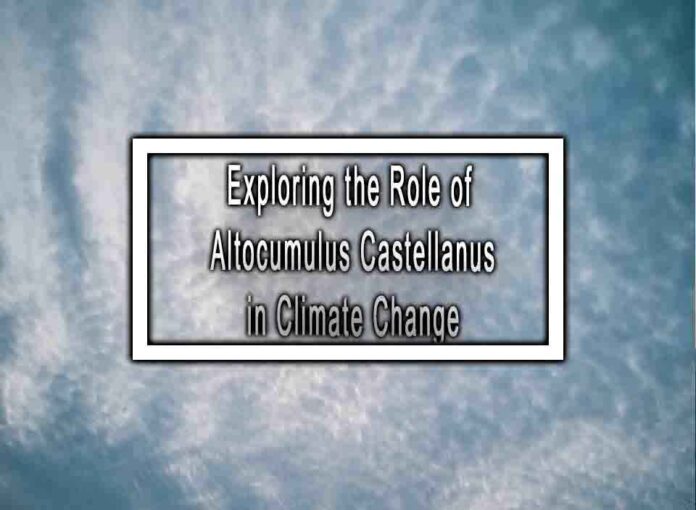Altocumulus castellanus clouds (ACC) are a type of cloud formation that can play a role in climate change in several ways. However, it’s important to note that ACC themselves are not a direct cause of climate change but are influenced by changing atmospheric conditions associated with climate change. Here’s how ACC may be linked to climate change:
Indicator of Atmospheric Instability:
- ACC are often associated with atmospheric instability and the potential for convective activity, including thunderstorms.
- As the climate changes, shifts in temperature and humidity patterns can lead to increased atmospheric instability. This, in turn, can result in more frequent occurrences of ACC and related convective weather events.

Increased Frequency of Severe Weather Events:
- ACC are sometimes seen as a precursor to severe weather, including heavy rainfall, hail, and thunderstorms.
- Climate change is linked to an increase in the frequency and intensity of extreme weather events, including severe thunderstorms. ACC can serve as an indicator of these changing weather patterns.
Impact on Local Weather and Climate:
- ACC can influence local weather patterns by affecting temperature, humidity, and precipitation.
- Changes in ACC frequency and behavior can have localized effects on climate, which can, in turn, contribute to broader climate change patterns.
Cloud Feedback Mechanisms:
- ACC, like other cloud types, can influence the Earth’s climate through feedback mechanisms.
- For example, ACC can reflect incoming solar radiation back into space, which can have a cooling effect on the Earth’s surface. However, they can also trap outgoing longwave radiation, contributing to warming in some instances.
Research and Monitoring:
- ACC are monitored by meteorologists and climate scientists as part of climate change research efforts.
- Studying the behavior and frequency of ACC, along with other cloud types, helps researchers better understand the complex interactions between clouds and climate.
It’s essential to recognize that the relationship between specific cloud types like ACC and climate change is complex and multifaceted. While ACC may be influenced by changing climate conditions, they are just one component of the Earth’s climate system. Climate change is primarily driven by factors such as greenhouse gas emissions, changes in land use, and natural variability.
Understanding the role of clouds, including ACC, in climate change is an ongoing area of research, and scientists continue to study these interactions to improve climate models and predictions.











